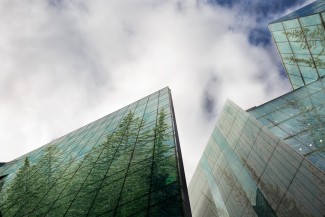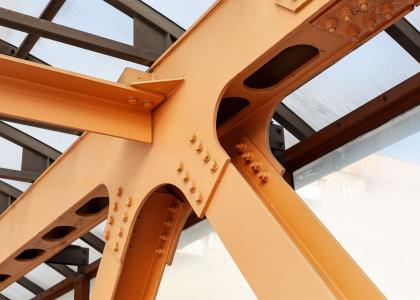[Ed. note: Dr. Esram is testifying today before the U.S. House’s Committee on Science, Space, and Technology in a hearing on Building Technologies Research for a Sustainable Future. This blog post draws from her testimony.]
To quickly retrofit a large share of our buildings—a critical step for cutting greenhouse gas emissions—we need federal research and development. The Biden administration and Congress can expand this R&D to develop integrated technologies, create ways to incorporate them in buildings, and support the workforce in an increasingly high-tech field.
Building efficiency technologies have proven a win-win strategy for reducing energy costs and creating local jobs. But the biggest opportunities are still ahead: Our research reveals that improving the efficiency of buildings has the potential to reduce U.S. greenhouse gas (GHG) emissions by nearly 20%. That would be a transformative pillar for meeting our ambitious carbon reductions goals.
These technologies can deliver more than the sum of their parts
Replacing lights, water heaters, or HVAC systems, or adding insulation, can each reduce a building’s GHG emission by a few percent, which seems small and incremental. But these components can add up to even more than the sum of their parts. For instance, when a building is well insulated, its lights are efficient, and its room temperatures well controlled, it needs a much smaller HVAC system to provide heating and cooling. And a building owner who decides to take the next step and go net-zero energy can invest in a much smaller photovoltaic system and less-expensive battery storage.
Retrofits can mitigate public health threats
Building retrofits not only save energy and reduce carbon emissions, but they also improve occupants’ health, comfort, and productivity, as well as community resilience. And we need that because today, many of our buildings aren't serving us well. For instance, when COVID-19 hit, public health experts suggested increasing indoor ventilation and filtration to reduce virus transmission risk. But many legacy building systems can’t handle that. When offices were sitting empty during the lockdown, they still consumed 40-100% of their usual energy. That’s a waste!
It took a pandemic to alert us that many schools need major renovation to keep our kids safer and healthier. And when the power went out across much of Texas, many poorly insulated homes quickly dropped to near-freezing temperatures. Imagine if these houses could have been kept warm during the blackouts with a heating device as small as a hair dryer when the winter storm hit. That’s not a dream. That’s passive-house technology.
Thanks to decades of federal investment in buildings R&D, we have many technologies available to make buildings efficient, healthier, and resilient for all. We know how to build zero-energy buildings, but we don’t know yet how to expeditiously retrofit existing buildings. When I worked at a national lab, my team and I modeled thousands of commercial buildings—all real buildings—and found that, on average, these buildings could reduce their energy use by 20% simply with efficiency measures that would pay for themselves. To realize these savings, we need a more innovative process for turning energy models into retrofit actions and a stronger-than-ever workforce.
Increase productivity in construction to promote deep retrofits
Improving productivity in the building construction industry can simultaneously expand the reach of deep retrofits and create jobs. If construction labor productivity were to catch up with the progress made by other sectors, there would be a $1.6 trillion economic gain globally. A third of that opportunity is in the United States. Many countries are moving some on-site construction to a manufacturing-inspired mass-production platform.
The U.S. construction industry will be left behind if we do not take initiative. We need to use lean manufacturing principles to streamline onsite retrofits to reduce costs and shorten project time. The construction industry is eager to transform, and we can’t afford to miss the opportune time to integrate low-lifecycle-carbon and high-resilience technical solutions with efficient manufacture and assembly design.
Retool the workforce and inspire a new generation of building leaders
A strong and creative workforce is key to success. On the one hand, we need to support today’s workers, equipping the specialized trades and contractors with knowledge and skills to use the latest equipment and tools to build, renovate, and operate buildings. Many of them are the first line of support for building owners. We need to help them gain a competitive edge. On the other hand, we should educate and attract a new generation of innovators and entrepreneurs. Buildings of the future are not just shelters made of bricks and mortar; they are machines that interact with the electric grid and vehicles.
Workforce development is a creative and interactive process. We need federal support and the science community to help grow tomorrow’s building leaders outside of the classroom.
Stepped up federal R&D can support the transformation of buildings
Congress should direct and support DOE to deploy its R&D capabilities to lay a solid foundation that sustains a successful transformation of the building industry as follows: (1) Spur modernized approaches to accelerate deep energy retrofits and create jobs; (2) Train and diversify our workforce and inspire a new generation of leaders; (3) Drive enduring market transformation through integration of efficiency R&D with health, resilience, and other societal goals; (4) Last, but not least, collaborate with state and local governments and community-based organizations to create proactive, replicable solutions for all. DOE should support these governments to lead by example, improving efficiency, health, and resilience in public housing, public schools, and other publicly owned or leased facilities.
I truly believe that we are facing a paradigm shift in our buildings and they energy they use. The Department of Energy can and must work to expand its R&D efforts to help enable this transition.



